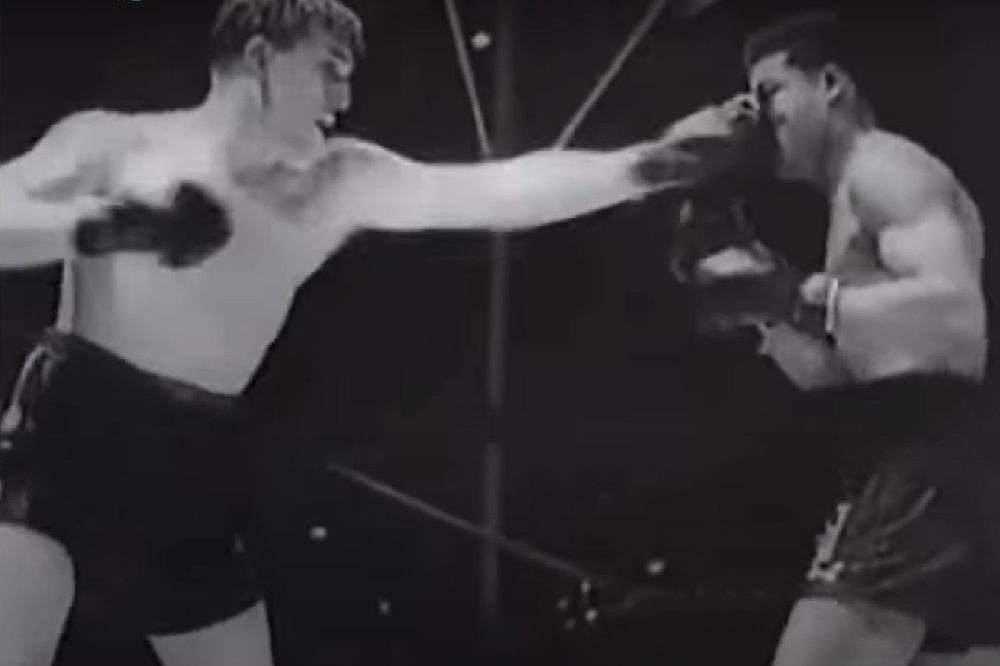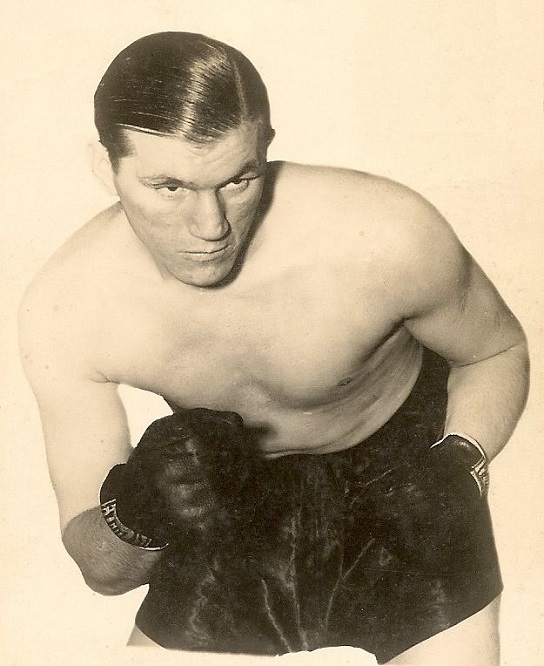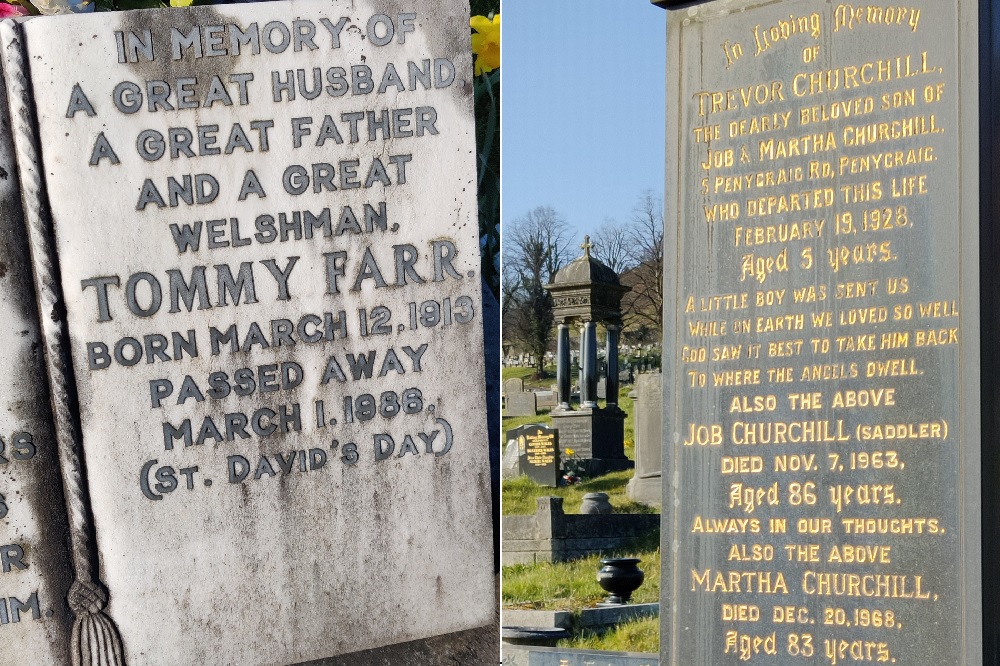The Man Who Made Tommy Farr

Continuing our autumn series by John Geraint, author of ‘The Great Welsh Auntie Novel’, and one of Wales’s most experienced documentary-makers. ‘John On The Rhondda’ is based on John Geraint’s popular Rhondda Radio talks and podcasts.
John Geraint
I got my hair cut this morning. Well, I say ‘cut’… what really happened is that the fuzz on top of my head was shaved. It’s been a good few years now since I gave up the fight with ‘male pattern baldness’. I’ve gone for the shaven-headed look. Even my best friends call it ‘brutal’.
All the same, the notion that I was cutting my hair was enough to bring back a sliver of memory from early childhood, just some hazy images really, but something that connects me, however loosely, to one of the Great Rhondda Stories, an event that sent the name of Tonypandy resounding around the world.
I’ve only ever been really happy with my hairstyle in one short period of my life, my early twenties. It was 1978, or early ’79. My hair was shoulder-length, dark with some auburn tints, complemented by a full, bushy beard and moustache.
When I washed and combed it properly, you might have mistaken me for the bass player from The Eagles. When it wasn’t all washed and combed, I probably looked more like a caveman.
It was a reaction, I suppose, to all those boyhood ‘short-back-and-sides’ that Mam made me have, packing me off to Toni’s, down at the bottom of Tylacelyn hill, by Jones the Fruiterer’s.
He might have been Italian, Toni – but Latin style and Roman culture seemed to have passed him by. In an era of Beatle cuts and mop tops, he left me and my cow’s lick stuck in the early 1950s, like some mini-GI who’d escaped from the Korean War.
But the memory that came back to me this morning was not the trauma of Toni’s; it was from much earlier, when I wasn’t old enough to go to the barbers by myself, and my Grampa, Tommy John, used to take me.
Wry smile
Elwyn’s was a proper old-fashioned barbershop up in Penygraig, in a little terrace adjoining the Labour Club, opposite Soar Chapel.
In my memory, Elwyn looked like Harry Secombe, and was just as jolly, but it’s not really him or his haircut I remember.
It’s what happened afterwards when I emerged short-haired onto the pavement outside, blinking into the late afternoon sun.
“Look!” said Grampa, pointing across the road to the garage at the corner where Penygraig Road turned up the hill. If I remember correctly, the garage had a couple of antiquated petrol pumps in front of it.
Behind them, resting on a chair, or maybe just an upturned crate he’d brought out there, savouring the last of the sunshine, and looking like he owned the place, which I think he probably did, a walking stick propped up alongside him, and a wry smile on his face, was a wrinkled old man – a man with one leg.
“Look,” Grampa said again, “that’s Jobey Churchill!”
Tonypandy Terror
Jobey Churchill, some say, was the man who made Tommy Farr. And Tommy Farr was the Tonypandy Terror, the tough, raw Rhondda boxer who seemed to be able to take any amount of punishment, and who took the legendary Joe Louis, the Brown Bomber, the full fifteen rounds in an epic fight for the World Heavyweight Championship in Yankee Stadium, New York in 1937.
Tommy Farr was born in Clydach Vale, one of eight children. He started boxing at 12, went down the pit at 14, and retired from coal-mining at the grand old age of 16, determined to make his living as a boxer.
He’d already had scores of fights in the boxing booths of the day, and now he embarked on scores more, professional bouts, up-and-down the Valleys, and further afield. He was brave and willing, but he was pretty naïve in the ring, and in the money matters and dark deals that surrounded the fight game.
In those early days, he seemed to lose as often as he won. There’s a story about him having to walk home all the way from London, left penniless after one his many defeats.
It was Jobey Churchill he turned to then, and that was the shrewdest move he ever made. The one-legged saddler understood ringcraft, what it takes to win a fight but, like all great coaches, what really counted was that he understood people.

Stars aligned
He lifted the young boxer’s spirits and got him back on track. He wasn’t just a coach to Farr, a trainer and a mentor, he was a father figure, berating him, cajoling him, comforting him in just the right mixture to bring out the best in his talents, and the steel in his character.
Farr rarely knocked anyone out. But thanks to Jobey Churchill, he added guile to courage, and learned how to wear his opponents down. There were still frustrations, but in a few short months in 1937, the stars all aligned for him.
He became British and Empire Champion, before beating former world champ Max Baer on points. And then he did knock someone out – the German tank, Walter Neusel, and he did it in front of Hitler’s Ambassador to London, Joachim von Ribbentrop.
The British press went wild about Farr’s victory: he’d beaten the Nazis!
So, finally, Tommy Farr got his big break – a match with great Joe Louis, for the Heavyweight Championship of the World.
Underdog
It was Jobey Churchill who went with Tommy Farr, crossing the Atlantic with him in luxury on the Queen Mary, and standing in his corner at the packed-out Yankee Stadium, encouraging him between rounds with a few phrases in Welsh, as the fight went on… and on.
Back in Tonypandy, in the middle of the night, my Grampa and my father – and everyone else in Wales, it seems – were glued to every word of the ‘live’ radio commentary, relayed for the first time down the transatlantic cable.
Farr was a huge underdog: no one really gave him a chance of surviving more than a round or two. But he took the Joe Louis the distance, sticking at it through fourteen bruising rounds, and rallying strongly in the fifteenth and last, making his supporters certain he’d done enough to win.
It wasn’t to be. But his battling efforts, his tenacity, and the craft that Jobey Churchill had instilled in him, won him friends and fans on both sides of the Atlantic.
He was a celebrity now, big news, his name and that of his hometown on everyone’s lips, and he came home to Tonypandy to a hero’s welcome.
Top dog
There were two other small connections I have to the Tommy Farr story.
One summer – I wasn’t much older than the day I saw Jobey Churchill – my parents took me and my grandparents on holiday to Bournemouth.
We were in the Winter Gardens, it was getting dark, I was shouting excitedly to my Dad as we played ball on the grass. A couple walking their dog approached us. The man had recognised my Rhondda accent.
He was living down there on the South Coast of England – but he was Tommy Farr’s brother. A long conversation with my grandfather, Tommy John, ensued: shared memories, people they both knew.
Bored, I suppose, I interrupted them to ask what the dog’s name was.
“Ask him,” said the man, smiling. I was young, but old enough to know that a dog couldn’t tell you its name.
“No, really, what’s his name?”
“Ask him,” I was told once more. Because, yes, you’ve guessed, the dog was called Askim. It was a piece of mischievous Rhondda wordplay, transported to the watering holes of Southern England, and though I’m sure Jobey Churchill didn’t have anything to do with it, in my childish imagination, the two things became connected – the intelligence of the coach, and the wit expressed in a pet’s moniker.
Making a name for yourself, I decided, wasn’t about hitting hard; it was about boxing clever. That’s what turned the underdog into a top dog.
It was what he’d learned from Joby Churchill which made all the difference for Tommy Farr, the difference between being just another journeyman boxer, and a hero whose sporting glory would be remembered a century later.

Heroes
My final connection to Tommy Farr is pure coincidence.
My grandfather died when I was 14. Right next to where he’s buried in Trealaw Cemetery stands a much more impressive memorial.
A carved white angel stands between four black marble pillars supporting a cut-stone roof topped by a cross.
The Tonypandy Terror had that constructed for his parents, and he too now lies there: Tommy John and Tommy Farr, two heroes of mine, separated by a few feet of Rhondda clay.
And just yards away, I discovered recently, in direct line of sight, lies the headstone of another Rhondda titan, a titan with one leg: ‘Job Churchill (Saddler), died November 7, 1963, aged 86 years. Always in our thoughts’.
John On The Rhondda’ is broadcast at about 3.15pm as part of David Arthur’s Wednesday Afternoon Show on Rhondda Radio
All episodes of the ‘John On The Rhondda’ podcast are available here
John Geraint’s debut in fiction, ‘The Great Welsh Auntie Novel’, is available from all good bookshops, or directly from Cambria Books
Support our Nation today
For the price of a cup of coffee a month you can help us create an independent, not-for-profit, national news service for the people of Wales, by the people of Wales.




